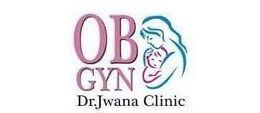Embarking on the journey of building a family can be emotionally challenging for couples facing infertility.
Infertility is the inability to conceive after a year of regular unprotected intercourse.
While both men and women can face fertility issues, this blog will discuss various causes of infertility in women, shedding light on the signs, symptoms, and prevalence of this condition.
How Common is Infertility in Females?
Infertility is prevalent, affecting at least 10% of women and individuals assigned female at birth. The likelihood of experiencing infertility rises with age.
Around 30% of fertility problems originate in the woman.
Approximately 60 to 80 million couples globally, according to the World Health Organization, experience infertility issues.
Symptoms of Infertility in Women
Infertility in women may manifest through various symptoms. Signs of Infertility in women include:
Unable to conceive even after unprotected sex.
Irregular Menstrual Cycles
Absent menstrual cycle
Too long menstruation(35 days or more)
Too short menstruation (less than 21 days)
Painful Menstruation
Hormonal Imbalances
Pelvic Inflammatory Disease (PID)
What causes infertility in women?
Causes of female infertility include:
Polycystic ovary syndrome (PCOS)
PCOS
PCOS, or polycystic ovary syndrome, disrupts ovulation due to hormonal imbalances.
Linked to insulin resistance and obesity, it manifests as excess facial/body hair and acne and is a leading cause of female infertility.
Hypothalamic dysfunction
Hypothalamic dysfunction can disrupt ovulation by affecting the production of critical hormones, FSH and LH, from the pituitary gland.
Factors like extreme stress, abnormal body weight, or significant weight changes can cause irregular or absent periods, indicating hormonal imbalance.
Primary ovarian insufficiency
It is also termed premature ovarian failure, which results from an autoimmune reaction or early depletion of eggs, often due to genetics or chemotherapy.
Before age 40, ovaries cease egg production and reduce estrogen levels.
Also Read: What are the different types of infertility?
Too much prolactin
Elevated prolactin levels, often from the pituitary gland, can lead to reduced estrogen production and infertility.
Medications for other conditions can also contribute to this hormonal imbalance.
Damage to fallopian tubes (tubal infertility)
Fallopian tube damage, known as tubal infertility, can result from blockages preventing sperm-egg interaction or hindering the fertilized egg’s journey to the uterus.
Causes include pelvic inflammatory disease (linked to sexually transmitted infections) and past abdominal or pelvic surgeries, such as those for ectopic pregnancies.
Endometriosis
Endometriosis happens when tissue typically found in the uterus grows outside, leading to scarring.
This can block fallopian tubes and hinder the union of egg and sperm. It can also interfere with the implantation of the fertilized egg and indirectly affect fertility by causing damage to sperm or eggs.
Problems with the uterus causing female infertility
Common uterine growths like fibroids or polyps can impact fertility by blocking fallopian tubes or hindering implantation. Despite this, many women with these growths still conceive.
Congenital uterine issues, like an unusual shape, can hinder the ability to conceive or maintain a pregnancy.
Problems with the cervix causing female infertility
Cervical stenosis, a narrow cervix, may result from either inherited malformation or cervical damage.
Sometimes, the cervix may not produce sufficient mucus for optimal sperm passage into the uterus.
Age-related Decline
Age Related Decline
A woman’s age significantly impacts fertility, with only a 5% chance of pregnancy per menstrual cycle at 40 years old.
Aging eggs are a key factor, diminishing viability over time. Women over 40 also face higher risks of miscarriage and genetic abnormalities in unborn babies.
Unexplained infertility
Infertility sometimes remains unexplained, possibly due to a combination of minor factors in both partners.
While the issue may resolve over time, prompt infertility treatment is advisable to enhance the chances of success.
Diagnosis of female infertility
In the process of investigating infertility, examinations are conducted for both the man and his partner.
Tests for the woman may include:
Physical examination
Blood tests
Laparoscopy
Ultrasound scans
The male partner’s semen will also be analyzed to make sure that he is fertile.
Treatment for female infertility
Treatment for female infertility
Treatment options for female infertility may include:
Surgery
Ovulation induction (using hormone treatment)
Assisted reproductive technologies (ART), including in-vitro fertilization (IVF).
Surgery for female infertility
Female infertility can result from obstructive issues in reproductive organs.
Surgical solutions exist for conditions like fibroids, non-malignant uterine tumors, polyps, endometriosis, and uterine abnormalities such as the septum and ovarian cysts.
Ovulation induction for female infertility
Irregular or absent periods often indicate irregular ovulation. Medications, like clomiphene citrate (Clomid, Serophene), can induce ovulation by enhancing hormone release from the brain.
Injectable hormones can stimulate ovulation by prompting ovarian maturation and egg release.
Monitoring through blood tests and ultrasound ensures a controlled response.
Excessive reaction may lead to ovarian hyperstimulation syndrome (OHSS), characterized by symptoms like fluid retention, abdominal pain, and bloating.
Regular blood tests help adjust the dosage to minimize the risk of OHSS.

